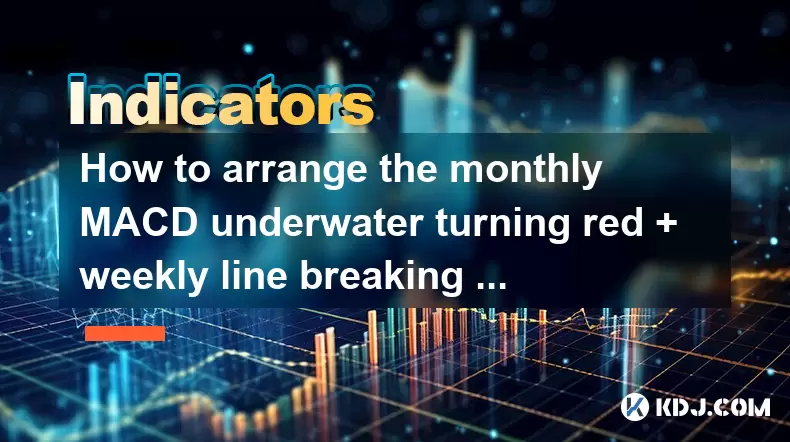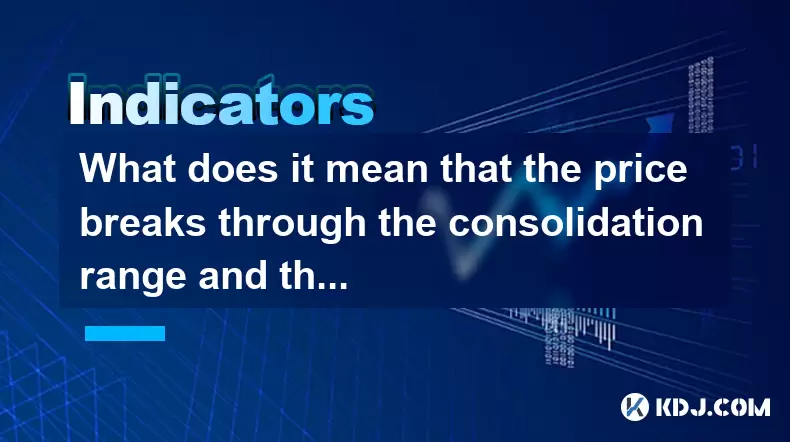-
 Bitcoin
Bitcoin $119800
1.38% -
 Ethereum
Ethereum $3873
3.25% -
 XRP
XRP $3.247
1.85% -
 Tether USDt
Tether USDt $1.001
0.02% -
 BNB
BNB $840.4
5.94% -
 Solana
Solana $190.0
2.55% -
 USDC
USDC $1.000
0.03% -
 Dogecoin
Dogecoin $0.2433
2.69% -
 TRON
TRON $0.3197
-0.05% -
 Cardano
Cardano $0.8367
1.39% -
 Sui
Sui $4.327
3.11% -
 Hyperliquid
Hyperliquid $44.00
0.31% -
 Stellar
Stellar $0.4461
1.76% -
 Chainlink
Chainlink $19.25
4.61% -
 Hedera
Hedera $0.2941
3.90% -
 Bitcoin Cash
Bitcoin Cash $598.4
6.89% -
 Avalanche
Avalanche $26.19
4.67% -
 Litecoin
Litecoin $115.1
0.50% -
 Shiba Inu
Shiba Inu $0.00001427
1.55% -
 Toncoin
Toncoin $3.379
2.01% -
 UNUS SED LEO
UNUS SED LEO $8.966
-0.16% -
 Ethena USDe
Ethena USDe $1.001
0.02% -
 Uniswap
Uniswap $11.04
4.16% -
 Polkadot
Polkadot $4.239
2.00% -
 Monero
Monero $324.6
0.36% -
 Bitget Token
Bitget Token $4.672
2.46% -
 Pepe
Pepe $0.00001294
2.69% -
 Dai
Dai $0.0000
0.01% -
 Cronos
Cronos $0.1443
2.71% -
 Aave
Aave $302.9
1.98%
How to arrange the monthly MACD underwater turning red + weekly line breaking through the 60-week line + daily line stepping back to confirm?
Monthly MACD turning red signals bearish momentum, but a weekly breakout above the 60-week MA with daily retest confirmation suggests a potential trend reversal, offering a high-probability long entry with proper risk management.
Jul 27, 2025 at 08:01 am

Understanding the MACD Indicator and Its Signal Line Behavior
The MACD (Moving Average Convergence Divergence) is a momentum-based technical indicator widely used in cryptocurrency trading to identify trend reversals, momentum shifts, and potential entry or exit points. It consists of three components: the MACD line, the signal line, and the histogram. The MACD line is calculated by subtracting the 26-period Exponential Moving Average (EMA) from the 12-period EMA. The signal line is a 9-period EMA of the MACD line. When the MACD line crosses below the signal line, it turns red, indicating bearish momentum. Conversely, when it crosses above, it turns green, signaling bullish momentum.
In the context of a monthly MACD underwater turning red, this refers to the MACD line being below the signal line (negative territory) and recently crossing downward, reinforcing a bearish signal on the monthly timeframe. This is a strong indicator of prolonged bearish sentiment and suggests that long-term momentum is shifting downward. Traders should pay attention to whether this red signal appears after a prolonged uptrend or during a consolidation phase, as the implications may vary. A red MACD under water on the monthly chart often signals that the broader market structure may be shifting bearish, even if shorter timeframes show temporary rallies.
Interpreting the Weekly 60-Week Moving Average Breakout
The 60-week moving average is a critical long-term support and resistance level in technical analysis. In cryptocurrency markets, where volatility is high, breaking through this level on the weekly chart is a significant event. When the price closes above the 60-week MA, it often indicates a shift in long-term trend from bearish to bullish. This breakout suggests that long-term selling pressure is weakening and that institutional or large-cap investors may be accumulating.
For this strategy, the weekly line breaking through the 60-week line must be confirmed with strong volume and a close above the moving average, not just an intraweek spike. Traders should verify that the breakout is sustained over at least two consecutive weekly candles. A false breakout—where price briefly exceeds the 60-week MA but quickly retreats—can trap traders. Therefore, confirmation is essential. Once confirmed, the 60-week MA may transition from resistance to support, offering a strategic level for future entries or stops.
Daily Price Action: Stepping Back to Confirm Support
After a weekly breakout above the 60-week MA, a pullback or retest on the daily chart is common and often healthy. This phase is known as "stepping back to confirm." During this stage, the price typically retraces toward the newly broken 60-week MA level (now acting as support) or consolidates near the breakout point. The goal is to confirm that the breakout was valid and that demand remains strong.
To confirm this step back:
- Monitor for bullish candlestick patterns such as hammer, bullish engulfing, or morning star near the support zone.
- Ensure volume decreases during the pullback, indicating lack of selling pressure.
- Look for MACD on the daily chart to remain above the signal line or show signs of turning up from near-zero.
- Check that the daily close remains above key support levels, ideally the 60-week MA projected to the daily timeframe.
This confirmation phase allows traders to enter with tighter risk parameters, placing stop-loss orders just below the retest low.
Combining Monthly, Weekly, and Daily Signals for Entry
The convergence of the monthly MACD turning red underwater, the weekly price breaking above the 60-week MA, and the daily chart stepping back to confirm creates a multi-timeframe alignment that can be powerful when interpreted correctly. However, the apparent contradiction—bearish monthly signal vs. bullish weekly breakout—requires careful analysis.
Here’s how to reconcile the signals:
- The monthly red MACD reflects past bearish momentum but may be nearing exhaustion if the price has already started rising.
- The weekly breakout suggests a potential shift in trend despite the lagging monthly indicator.
- The daily retest provides a tactical entry opportunity once bullish confirmation appears.
Traders should not act solely on the monthly signal. Instead, they should use it as context. If the monthly MACD is red but the weekly and daily structures are turning bullish, it may indicate a late-stage bear market bottoming process. Entry should be delayed until the daily confirmation is complete.
To execute:
- Wait for the weekly close above the 60-week MA.
- Observe the daily chart for a pullback toward the breakout level.
- Confirm with bullish price action and volume support.
- Enter long when the daily MACD shows bullish crossover or stabilization.
Risk Management and Position Sizing
Even with strong multi-timeframe signals, risk must be strictly managed. Cryptocurrency markets are prone to sharp reversals and fakeouts. A well-structured trade setup requires defined risk parameters.
Consider the following:
- Set a stop-loss below the confirmed support level of the daily retest, allowing room for normal volatility.
- Use position sizing to limit exposure—no more than 2–5% of total portfolio value per trade.
- Avoid averaging down if the trade moves against you immediately after entry.
- Monitor on-chain metrics (e.g., exchange outflows, whale accumulation) to support technical signals.
Additionally, use trailing stops once the trade becomes profitable to protect gains during extended moves. Never ignore macro factors such as regulatory news or Bitcoin dominance shifts, which can override technical patterns.
Frequently Asked Questions
What does "MACD underwater turning red" mean in practical terms?
It means the MACD line is below the signal line and in negative territory, indicating bearish momentum. On the monthly chart, this suggests long-term downward pressure, even if shorter timeframes show bullish signs.
How do I project the 60-week moving average onto the daily chart?
Most trading platforms allow you to overlay weekly indicators on lower timeframes. Alternatively, calculate the current 60-week MA value and manually plot it as a horizontal line on the daily chart. Platforms like TradingView support multi-timeframe indicators, enabling direct visualization.
Can the daily "step back" last more than a week?
Yes. Pullbacks can last several days to multiple weeks, especially in low-volume conditions. The key is not the duration but whether the price holds above the breakout level and shows signs of renewed buying interest.
Should I act if the weekly breakout lacks volume confirmation?
No. A breakout without significant volume is suspect. Wait for a retest with higher volume on the up move to confirm genuine demand. Low-volume breakouts often fail, leading to false signals.
Disclaimer:info@kdj.com
The information provided is not trading advice. kdj.com does not assume any responsibility for any investments made based on the information provided in this article. Cryptocurrencies are highly volatile and it is highly recommended that you invest with caution after thorough research!
If you believe that the content used on this website infringes your copyright, please contact us immediately (info@kdj.com) and we will delete it promptly.
- Crypto Binary Options and Trading Platforms: A New Frontier
- 2025-07-28 09:10:03
- Bitcoin, Quantum Solutions, and Yen Depreciation: A New York Minute on Corporate Crypto Moves
- 2025-07-28 09:10:04
- XRP: The Next Store of Value? SEC Ruling & ETF Hopes Fuel Optimism
- 2025-07-28 09:10:05
- Bitcoin's Potential Final Rally: Decoding Historical Data and Future Projections
- 2025-07-28 06:30:11
- BlockDAG, XRP, and Utility-Driven Growth: A New Era for Crypto?
- 2025-07-28 06:30:11
- Litecoin's ADX Crossover: Rally Potential or False Dawn?
- 2025-07-28 06:50:11
Related knowledge

What signal does the ROC send when it rises rapidly from a low level and breaks through the zero axis?
Jul 27,2025 at 10:15am
Understanding the Rate of Change (ROC) IndicatorThe Rate of Change (ROC) is a momentum-based oscillator used in technical analysis to measure the perc...

What signal does the DMA fast line cross the slow line above the zero axis?
Jul 28,2025 at 05:42am
Understanding the DMA Indicator and Its ComponentsThe DMA (Difference of Moving Averages) indicator is a technical analysis tool used in cryptocurrenc...

What does it mean that the rebound is blocked after the moving average is arranged in a short position for the first time?
Jul 26,2025 at 10:51am
Understanding the Short-Term Moving Average ConfigurationWhen traders refer to a 'short position arrangement' in moving averages, they are describing ...

What does it mean that the ZIGZAG low point is raised and the high point breaks through the previous peak?
Jul 28,2025 at 03:28am
Understanding the ZIGZAG Indicator in Cryptocurrency TradingThe ZIGZAG indicator is a technical analysis tool widely used in cryptocurrency trading to...

What does it mean that the parabolic indicator and the price break through the previous high at the same time?
Jul 26,2025 at 07:22pm
Understanding the Parabolic Indicator (SAR)The Parabolic SAR (Stop and Reverse) is a technical analysis tool developed by J. Welles Wilder to identify...

What does it mean that the price breaks through the consolidation range and the moving average diverges upward?
Jul 28,2025 at 03:16am
Understanding the Consolidation Range in Cryptocurrency MarketsIn cryptocurrency trading, a consolidation range refers to a period where the price of ...

What signal does the ROC send when it rises rapidly from a low level and breaks through the zero axis?
Jul 27,2025 at 10:15am
Understanding the Rate of Change (ROC) IndicatorThe Rate of Change (ROC) is a momentum-based oscillator used in technical analysis to measure the perc...

What signal does the DMA fast line cross the slow line above the zero axis?
Jul 28,2025 at 05:42am
Understanding the DMA Indicator and Its ComponentsThe DMA (Difference of Moving Averages) indicator is a technical analysis tool used in cryptocurrenc...

What does it mean that the rebound is blocked after the moving average is arranged in a short position for the first time?
Jul 26,2025 at 10:51am
Understanding the Short-Term Moving Average ConfigurationWhen traders refer to a 'short position arrangement' in moving averages, they are describing ...

What does it mean that the ZIGZAG low point is raised and the high point breaks through the previous peak?
Jul 28,2025 at 03:28am
Understanding the ZIGZAG Indicator in Cryptocurrency TradingThe ZIGZAG indicator is a technical analysis tool widely used in cryptocurrency trading to...

What does it mean that the parabolic indicator and the price break through the previous high at the same time?
Jul 26,2025 at 07:22pm
Understanding the Parabolic Indicator (SAR)The Parabolic SAR (Stop and Reverse) is a technical analysis tool developed by J. Welles Wilder to identify...

What does it mean that the price breaks through the consolidation range and the moving average diverges upward?
Jul 28,2025 at 03:16am
Understanding the Consolidation Range in Cryptocurrency MarketsIn cryptocurrency trading, a consolidation range refers to a period where the price of ...
See all articles

























































































